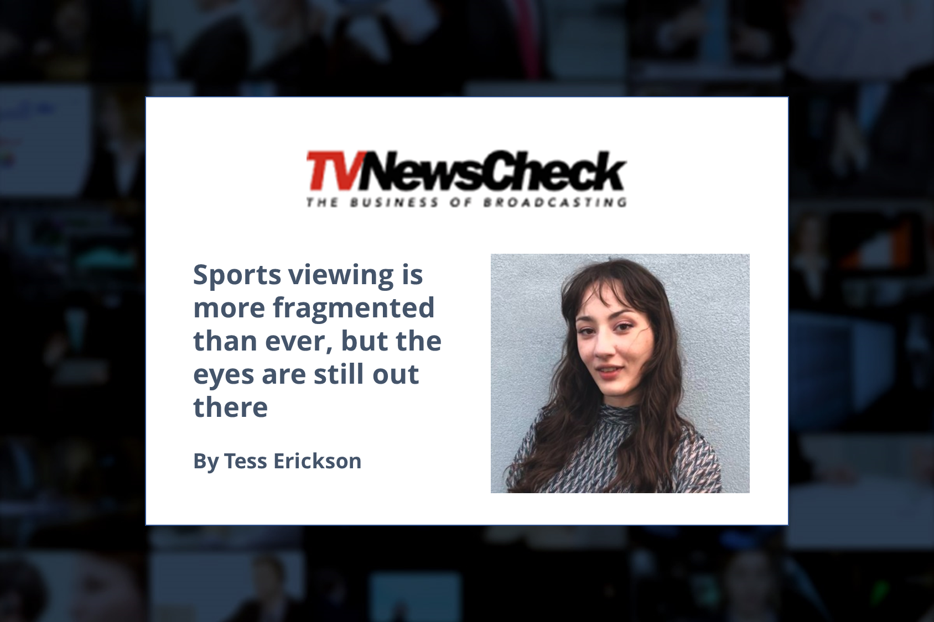
Sports Viewing Is More Fragmented Than Ever, But The Eyes Are Still Out There
April 24, 2023 | Tess Ericksonby Tess Erickson
It’s that sweet spot during the calendar year when sports fans are in their glory — whether it’s baseball, basketball, hockey, soccer, golf, tennis or college athletics, sports are “always on.” But are viewers tuning in? Advertisers sure seem to think so — Nielsen reports that 113 million viewers tuned into the Super Bowl, 25.8 million to the World Cup Final and 8.4 million to March Madness opening day — and with this viewership comes ad dollars.
The bigger question is clearly not “are” they tuning in, but “how” are they tuning in? The Broadbeam “What’s on TV Study,” fielded in December 2022 as an update to a study originally conducted in December 2021, points to the trend that YES, fans are tuning in, but perhaps more increasingly so on a new platform. It’s not as simple as cable, broadcast and OTT (over-the-top) anymore. We now break streaming down into its various platforms, including AVODs (advertising-based video on demand, such as Tubi, Amazon Freevee, Vudu and The Roku Channel), Device Channels (such as The Roku Channel, Samsung TV+, LG Channel, etc., that come pre-loaded on a television), SVODs (subscription video on demand, including Netflix, Disney+ and Prime Video), and Linear+ (a streaming platform with the feel of traditional cable TV, such as Peacock, Paramount +, Discovery+).
Thirty-three percent of our survey respondents reported that the driving reason for being loyal to one of these OTT services was live sports, with Linear+ options such as ESPN+, Peacock and Paramount+ being their go-to channels. Amazon Prime Video’s deal to stream “Thursday Night Football” has been a game-changer for their service as well; 20% reported streaming live sports on Prime during our 2022 survey, versus just 13% in 2021.
The top sports to stream? Football, unquestionably, was the No. 1 response, followed by basketball and baseball.
No matter the favorite sport, though, it’s still all about brand recognition. In all the chaos around shifting online sports rights, ESPN, and their streaming service ESPN+, benefit from their strong association with sports across the board. When asked to match sporting events, from the Olympics and U.S. Open Tennis, to “Sunday Night Football,” with the OTT service they could be viewed on, people were most likely to guess ESPN+ for all events, both that they did and did not host, driving home both viewers’ confusion about where to find sporting events as well as ESPN+’s place as America’s default sports streaming service.
But this is not to say traditional broadcast and cable are dead. Close to 40% of our respondents reported watching “live sports” in their own household that pays for cable, or at a bar or restaurant during a big sporting event.
Regardless of “how” they are watching, they’re watching. Across the board, 35%-40% of our respondents, regardless of the breakdown of their age group (18-34, 35-49, 50-64 or 65+) are looking to watch live sports. It’s clear that how viewers are watching is more fragmented than ever with so many options — paid, free, streaming, traditional — but for sports teams, broadcasters and advertisers, not to worry, the eyes are still out there.
The Broadbeam What’s on TV Study was fielded in December 2022 with a sample of 1,500, and examined viewership and stated behaviors around TVs in their home, and their CTV and TV viewing habits.


